Sicily is an Island located in the Mediterranean Sea of the coast of the south-western side of the Italian boot. By area, it is the largest Island in this sea and is inhabited by the over 5 million people. Over the years, Sicily has become an acclaimed touristic destination, thanks to its warm and sunny climate, its history, its cuisine, and its charm.
It was two weeks before I was to depart for the my first time to sub-saharan Africa when Apolline told we that her Visa for her mission to Congo would not arrive in time and that she could not leave Europe until a few weeks later. A canceled flight to Kenya and a few hours on Google flights later we decided Sicily would be our plan B.
Apolline and I landed in Palermo, Sicily's biggest city, on hot July Tuesday, and after a few mishaps getting our rented car we set off, direction: Agrigento. On our way there, and after a well deserved Gelato stop, we went to check out Scala dei Turchi (Stair of the Turks), named this way because of the white sedimentary rock, known as marl, that are shaped like stairs and due to the frequent innovations of the Moors on this coast of Sicily.
We arrived in Agrigento in the early evening, found our Airbnb, went went for a Spritz and Pizza. Agrigente sits slightly inland above a steep hill and is most famous for the Valle dei Templi (Valley of the temples), an archaeological site composed of a series of Greek temples.
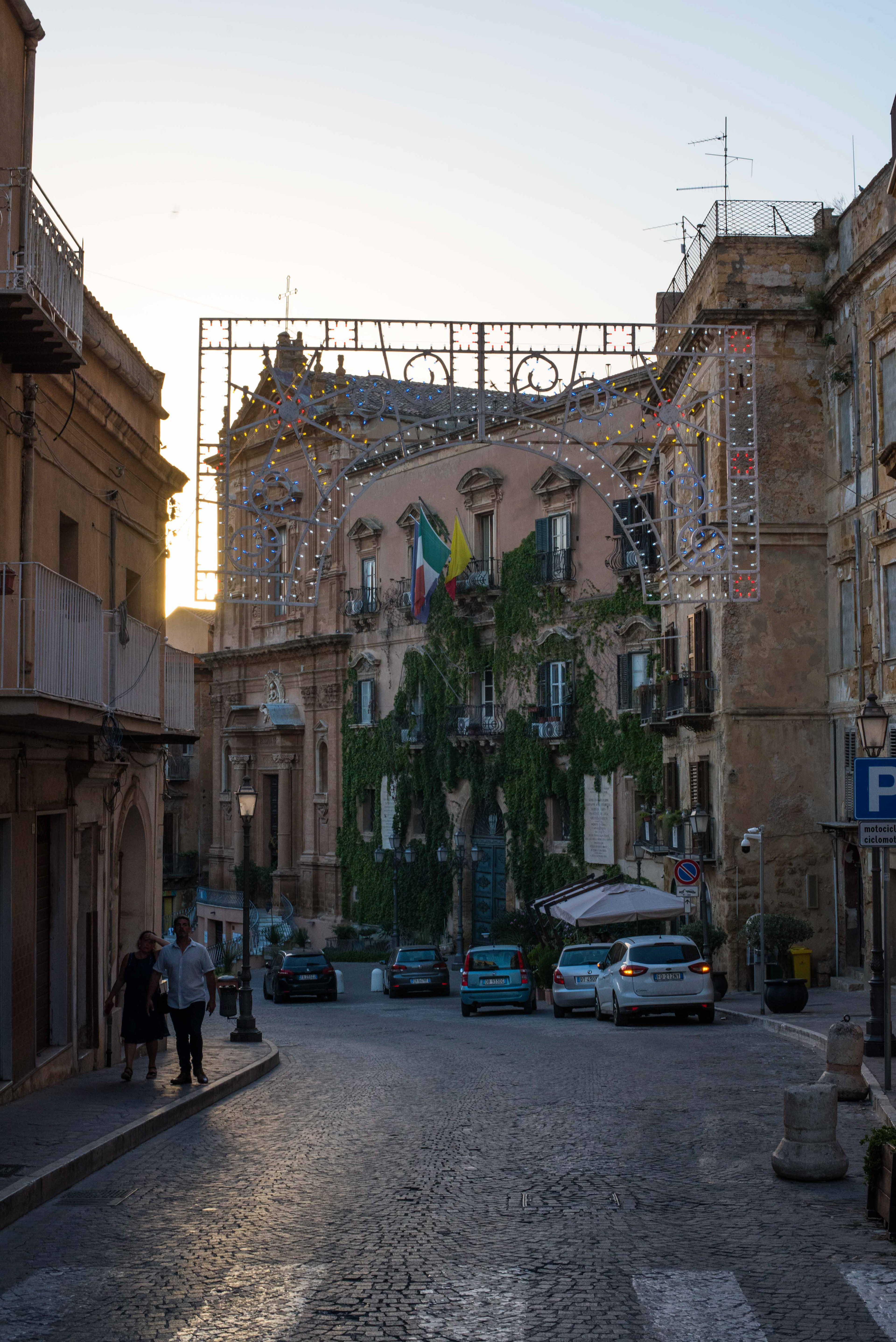

Being far from a connaisseur, I was most impressed by the Temple of Concordia and is considered one of the best preserved temple of the Greek Doric period. It was built around 440-430 BC and consists of 6 by 13 columns making it rather impressive. Over the years it served multiple functions, including becoming a Christian Basilica in the 6th century AD. This lasted until 1785, when renovations where started and the walling that had been placed between the columns was removed.
We then headed to Scicli, the first of a few Baroque style cities we would visit. Scicli was rebuilt after the 1693 earthquake in a rich baroque style. Yet at 14h, the combination of near ubiquitous white stone reflecting the light and the near absence of shadows made the city felt like an oven. Unsurprisingly, the city was dead at that time, which made for an austere ambiance.
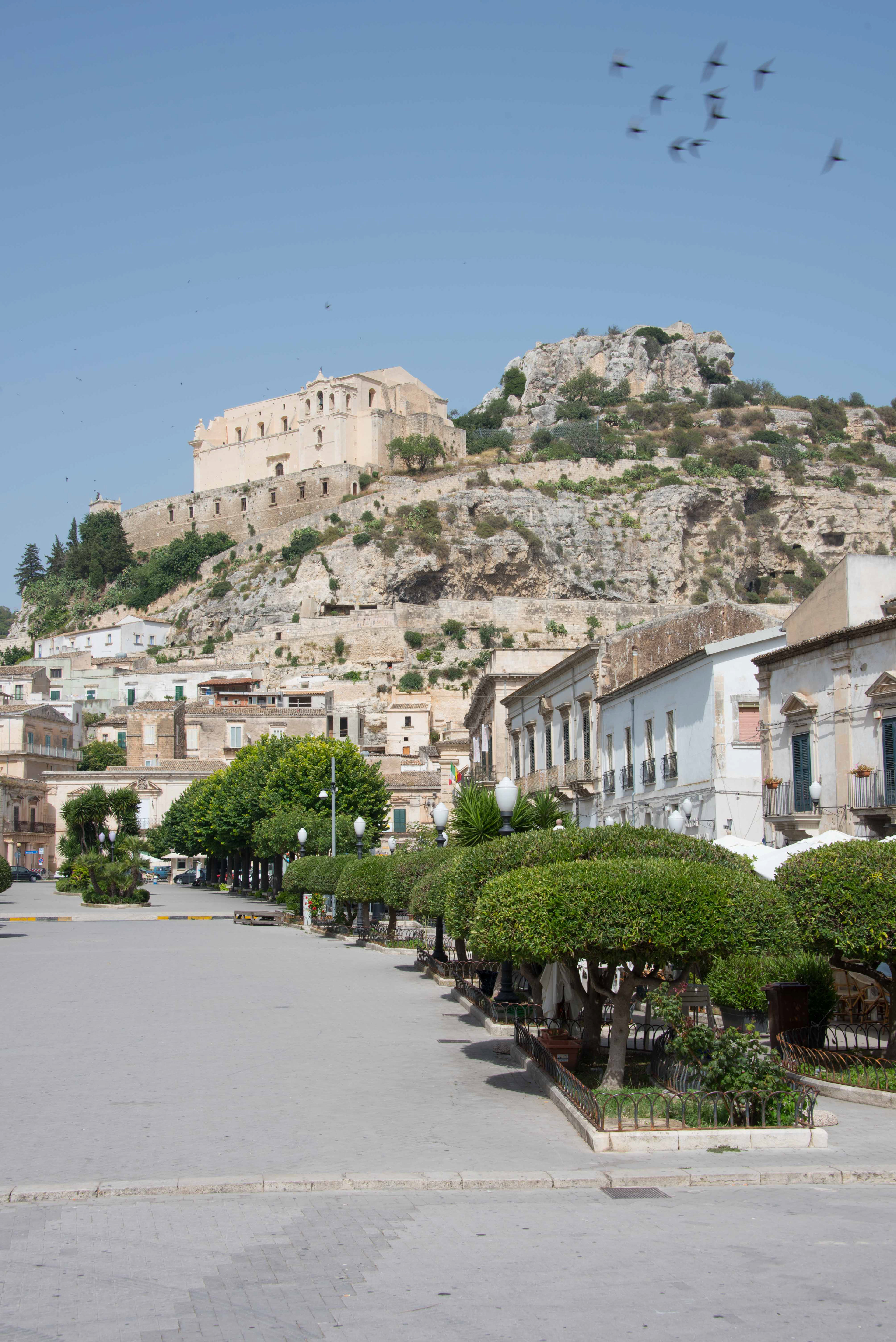
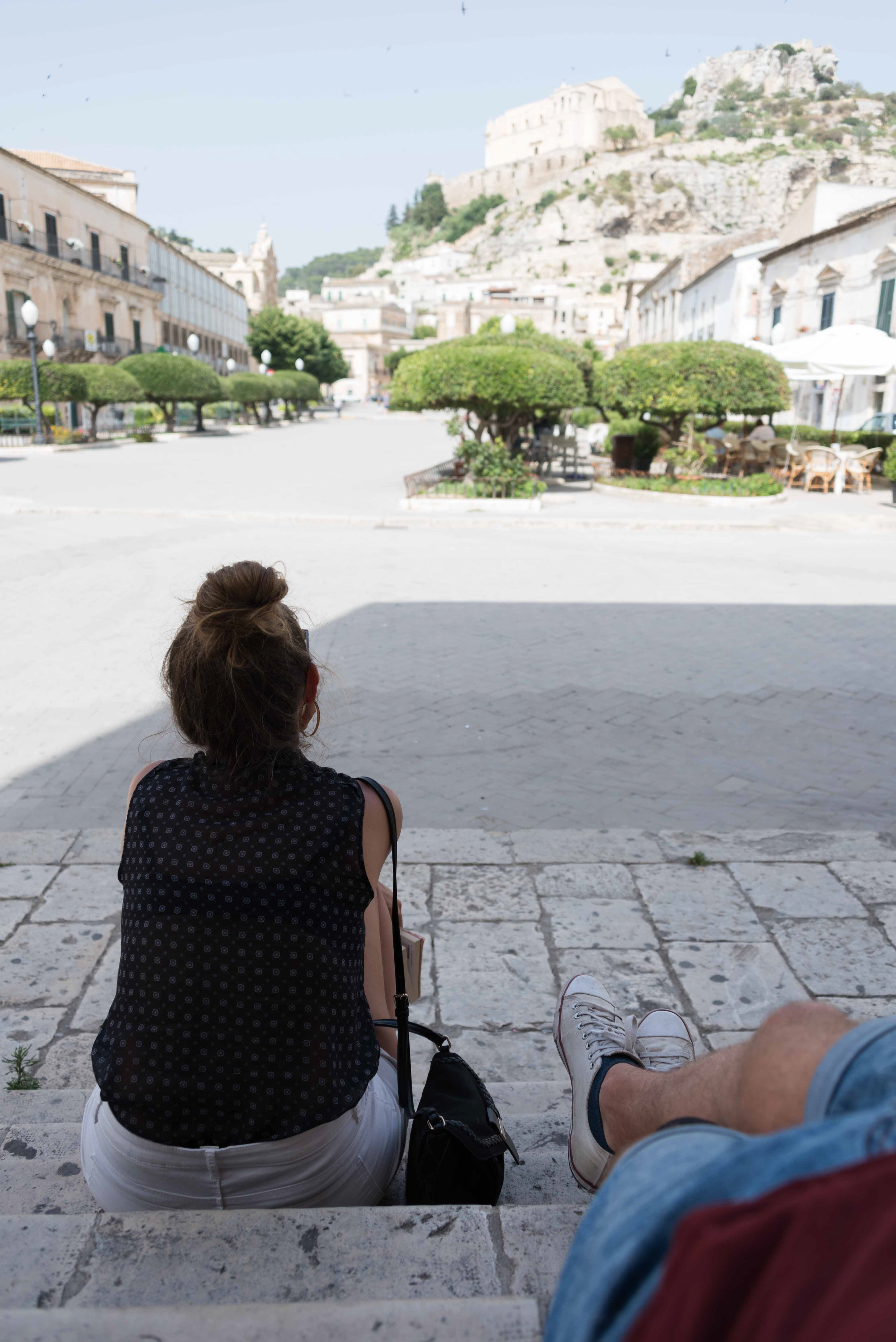
After our first night in Modica, the second Baroque city we visited, we had a typical Sicilian breakfast: granite and brioche. On point.
Modica was, like most cities around the area, rebuilt after the devastating 1693 earthquake. It lies in a valley between two steep hills and can be split into Modica Alta (upper Modica), at the upper left of the picture, and Modica Bassa (lower Modica), at the bottom of the hills. The city is full of Chiesas (churches) and has a castle, perched atop on of the hills. The town's economy has mainly revolved around agriculture (and now tourism) but the city is also known for its chocolate, produced in a similar fashion to the ancient Aztec recipes which makes for a light, grainy chocolate.
We headed for our day trip to the city of Ragusa, in which the main sight is Ragusa Ibla (on the right bellow), which is the older part of the city that has been inhabited since antiquity. Ragusa Nuova (the new Ragusa), contrasts Ragusa Ibla's tiny meandering streets through its long and wide rectilinear avenues. Like Modica and Scicli, it also has a vast quantity of chiesas and Palazzos (palaces).
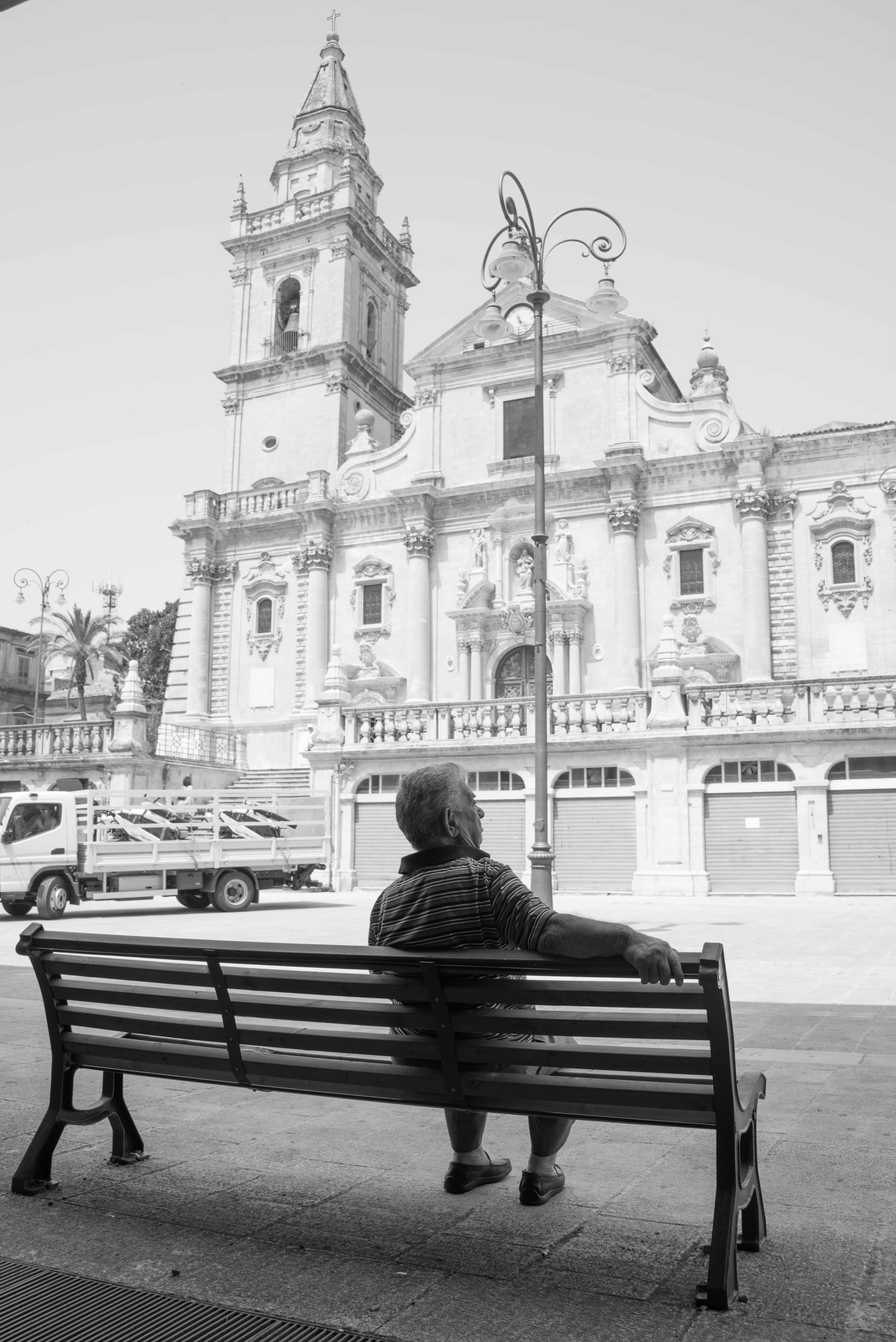
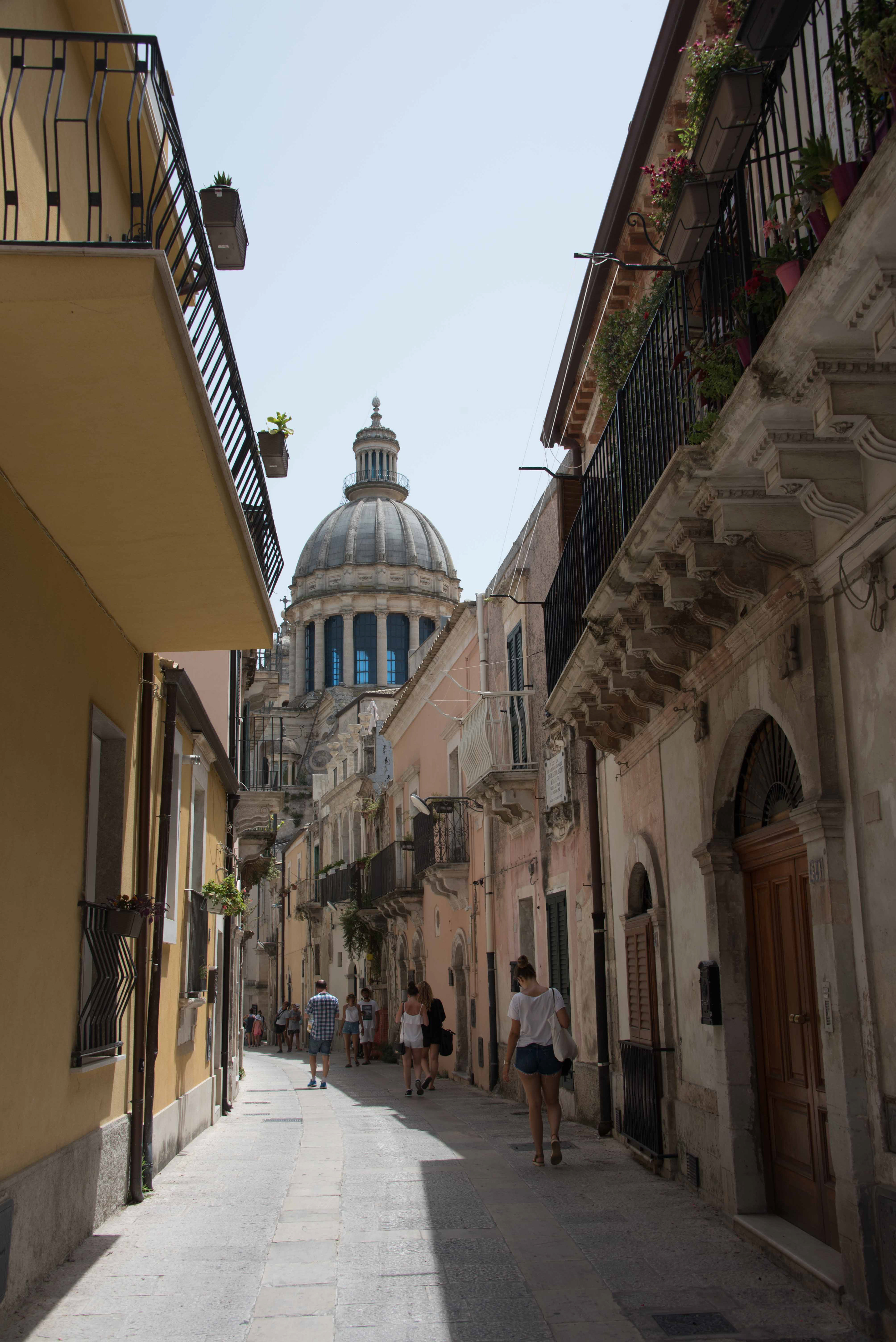
In the evening we went back to Modica and enjoyed the relative coolness to walk around Modica Alta and back down to our apartment. The church you see above is Chiesa San Pietro. If you ever go to Modica (and like seafood), I highly recommend eating at I Lupini, a small restaurant in a back street. You will not regrette it, both for the low price and excellent food.
The third Baroque city we visited was Noto, a beautiful city in which most buildings were built with yellow limestones.
In Noto we went up the bell tower of one of the churches to get a better view of the city. Noto was built on a hill, like many other cities in the area, and the top of the hill is where the historical sites lie while the bottom is where the new city is found.
Also in Noto, we visited the communal theater, built in 1851 by Francesco Cassone.
Our next stop was Syracusa and the island of Ortigia, one of my favorite places during this trip. The atmosphere is wonderful: the streets are busy with life, the proximity to the sea a major plus when the sun is at its highest, and the fortified wall give the city a distinct charm.
On the main square, that with the Cathedral, a wedding was taking place. A vespa and an old fiat were waiting to bring the bride and groom to their next destination. It was funny to see everyone looking at the two perfectly renovated vehicles with their different shades of blue.
As you may have noticed, Syracus is another Baroque city, reconstructed after the 1693 earthquake. The sandstone buildings are adorned with intricate designs and impressive sculptures.
In the morning, we went to the market to get some food for lunch. Nothing beats a nice tomato-mozzarella-basil-pistachio salade! Some of the stalls were very pretty, including this spice one.
Losing ourself in Ortigia was definitely one of the highlights of this trip. During one of these outings, Apolline decided to show off her still-present ballet skills, which I later tried to copy, although not nearly as gracefully (indeed I will not include that picture, for fear of hurting your precious eyes).
After Syracusa, we headed to Catania, the second largest city in Sicily. It felt (and was) busier and much larger than any of the other cities we had been and is mostly modern and the buildings are relatively tall. Catania is famous for its fish and for being the base of the Etna Volcano.
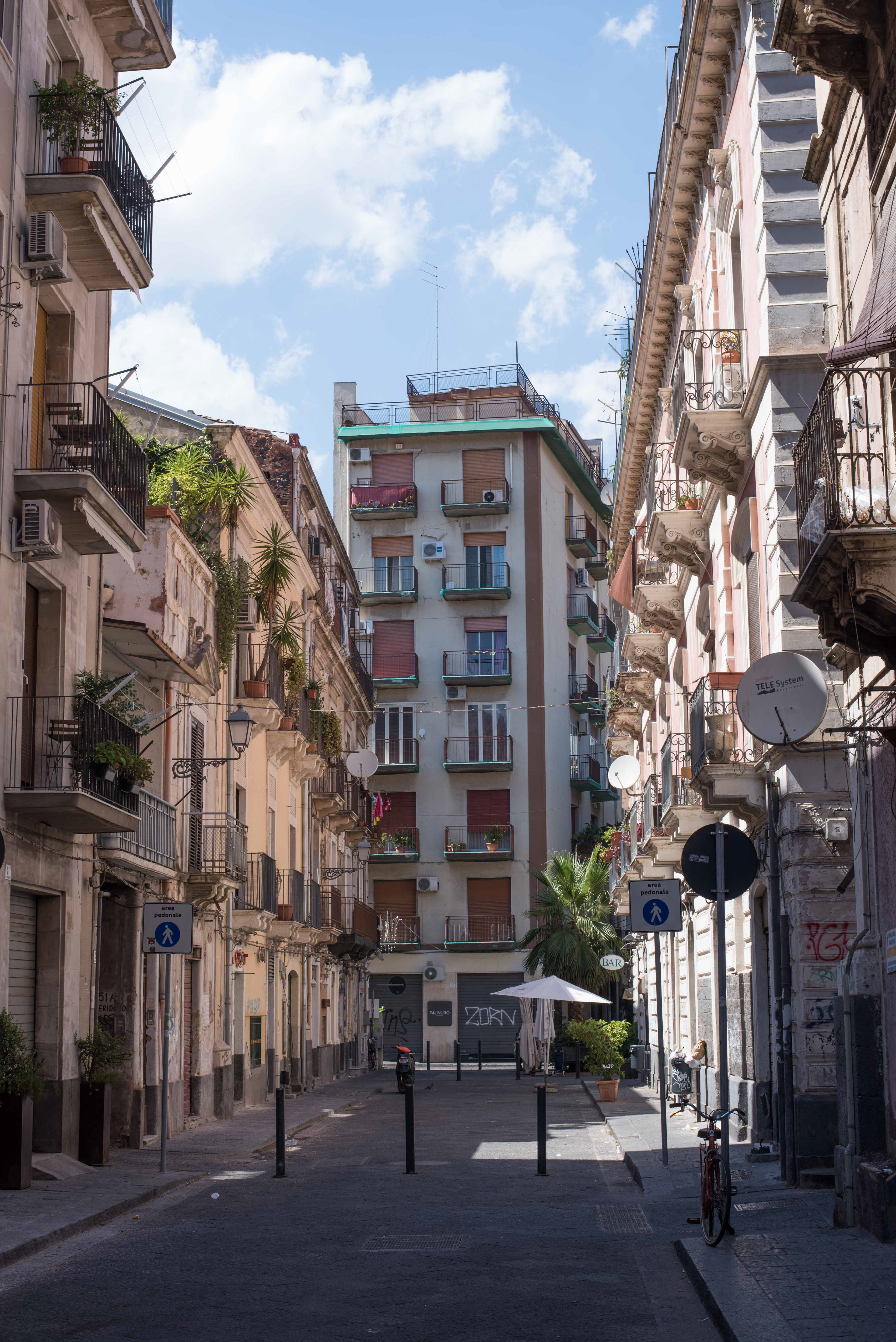
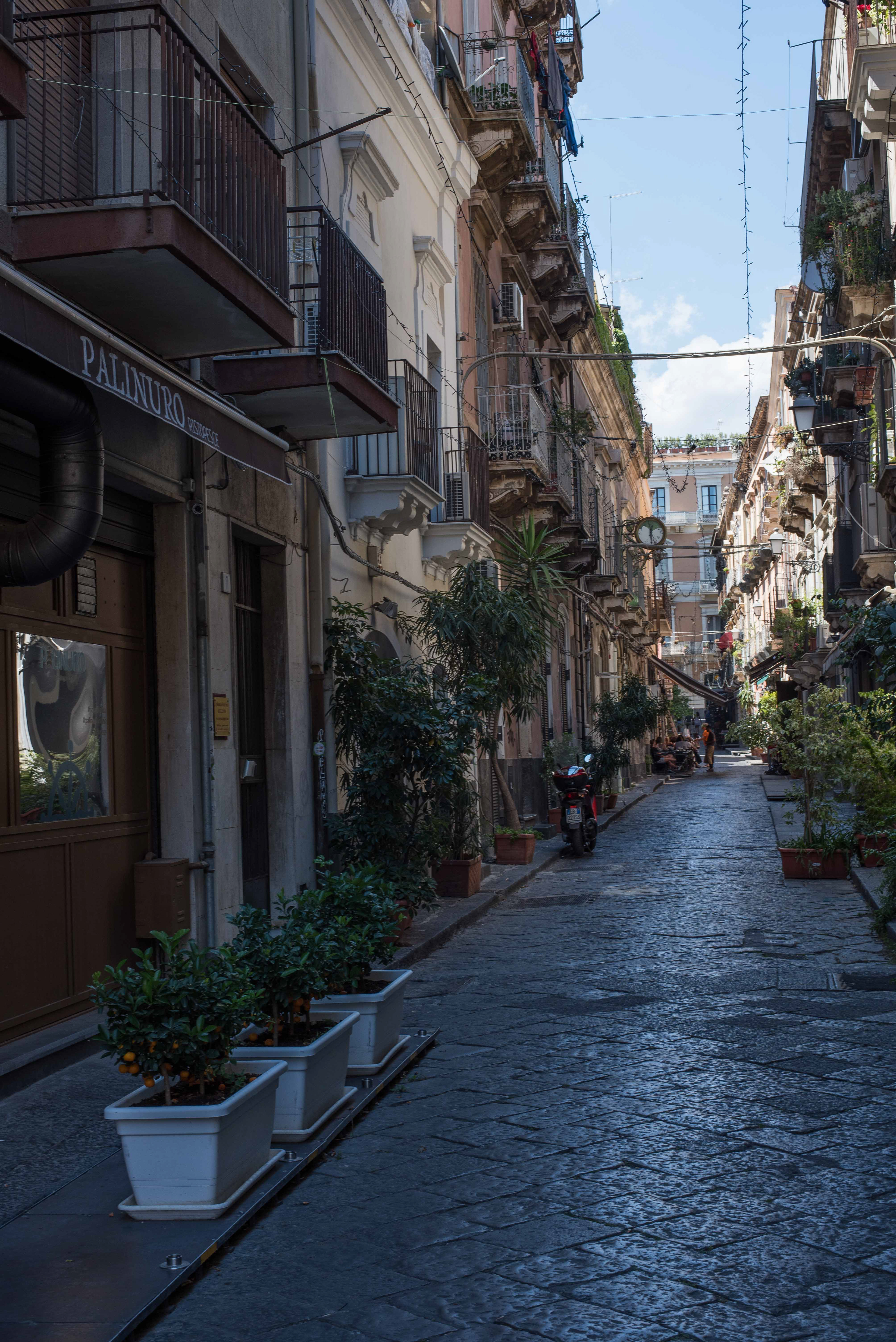
The next morning, we drove to the bottom of the cable car that goes up to around 2500 msl on Mount Etna (we can see that part in the middle right of the picture above). Mount Etna is actually the most active volcano in mainland Europe! Then, we hiked up to two extinct craters that can be found at 3000 msl. Although the skies were cloudy, the lunar landscape was breathtaking. But it was cold: in Catania, the temperature rose close to 35 degrees Celsius, while at 3000 msl it was closer to 10. We sat atop a warm rock (heated by the steam coming out of the soil nearby), had a quick picnic, and went straight back down.
The next day, we drove to Taormina, a very touristy town sitting on a rocky hill. This is the Taormina Duomo, the main church, and its square, built in the XIII century. That night, France won the world cup (Yeaaah).
This is the Palazzo Duchi di San Stefano, built in the XIII and XIV centuries and surrounded by a small garden. Today it serves as an art Gallery.
Apolline, on some stairs in Taormina. Yes, she is wearing the same dress as the ballet picture. Yes, this is my favorite dress of hers. No, she did not wear it for 10 days.
The Teatro Greco, or Taormina's Greek Theatre, and the Etna Volcano in the background. Although this theatre follows the Greek layout, because of the fact that it is mostly made of bricks, it was probably built by the Romans. It is 109 meters in diameter and frequently hosts performances, as can be deduced from the stage, opera seats, and bleachers that were present when this picture was taken.
Our second to last stop was Cefalù, a town named derived from the Greek word for "head" due to the large rock that can be seen on the right. Like most of Sicily, this town was occupied by the Greek, Romans, the Arabs, and the Normans, giving the architecture a peculiar style.
Cefalù, the rock, and the beach, as seen through the 14mm lense.
Our last stop was Palermo, Sicily's largest city whose metropolitan area has over 1.3 million inhabitants. This is the Palazzo dei Normanni (Palace of the Normans), which was home to the Sicilian Kings during the Norman reign and is Europe's oldest royal residence. Today, it is the seat of the Sicilian Regional Assembly.
We discovered Palermo by getting lost in its streets and often falling upon historical sites, such as Palermo's Cathedral. The pictures that follow are from these walks along the streets of the city.
Above, an unidentified Palazzio; on the left below, the Quatro Canti, a on octogonal Piazza (four sides of which are streets) which contains baroque buildings and statues representing the four seasons which was constructed under the Viceroys in 1608-1620. On the right bellow, Apolline standing at a window inside the Palazzo Pretorio (palace of eagles) and facing the roof of the Chiesa San Cataldo, a church with distinctive Arab architectural and decorative style.


This is the inside of the Palazzo Pretorio which now houses many of the officies of Palermo's government and was initially constructed in the mid IV century.
This is one of the reception halls of the Palazzo Mirto, one of the only Palazzos that still has furniture. It was home, up to very recently, to the same family for four centuries!
...and that is it for this Sicilian getaway, Apolline's sad face says it all. It was a blast.